 |
Focus features two in-depth reviews each month of fine art, architecture and design exhibitions and events at art museums, galleries and alternative spaces around Japan. The contributors are non-Japanese art critics living in Japan. |
|
|
 |
 |
 |
Tokyo's Flagship Station a Showcase Once Again
Susan Rogers Chikuba |
 |
 |
|
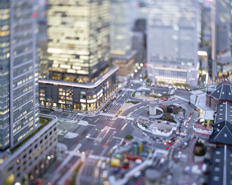 |
The octagonal north and south domes; the parapet, gables, and slate-and-copper roof; and the third-floor structure and façade of Tokyo Station's Marunouchi building have been restored to their original 1914 design as conceived by architect Kingo Tatsuno. Seismic isolation and vibration control technologies have been introduced as well.
Photograph courtesy of East Japan Railway Company |
|
In this 2008 photograph of the Marunouchi rotary by Naoki Honjo, from the current exhibition at Tokyo Station Gallery, one can just make out the windowless cap-like structure that was erected in place of the domes that were destroyed in 1945. How elegantly articulated the restored forms are by comparison -- a welcome addition to a city where few such 20th-century designs remain.
tokyo station #3, 2008 © Naoki Honjo; courtesy of nap gallery |
With the return of Tokyo Station Gallery on October 1 and the reopening of Tokyo Station Hotel two days later, the station's red-brick Marunouchi building has finally shed the last scaffolding of a restoration project that lasted more than five years. Since then, almost everyone entering the north and south rotundas of the 1914 structure -- the rushed, the curious, onlookers young and old, rail enthusiast or no -- has been taking a moment to cast their eyes upward and admire the light-filled octagonal dome with its cheery colors of yellow and green and fully restored stucco reliefs of zodiac animals, eagles, and clematis flowers. Outside in the plaza, too, the mood is merry at the capital's latest photo-op sight. After all, this is not a city where early-20th-century architectural treasures often win out against the wrecking ball.
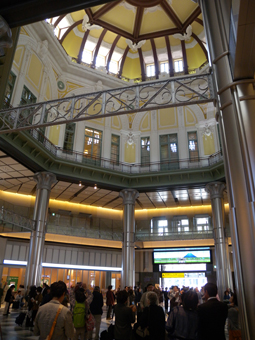 |
| Dome-struck: Tokyoites and visitors from afar pause en masse in one of the station's two newly restored rotundas. |
|
Waiting for the First Train is the inaugural exhibition of the new Tokyo Station Gallery, located just next to the Marunouchi north exit and now boasting 1.5 times its former exhibition space. After closing its last onsite event in March 2006, the museum did organize a few shows at other venues as the reconstruction and restoration progressed. But for those like me who enjoyed viewing, in this historical space, the gallery's freewheeling program mix of known and lesser-known names -- both from Japan and abroad and representing design and architecture as well as the fine arts -- it's been a long wait. Though it has a puzzling title (the first train of any line will have long since departed by the museum's 11 a.m. weekday or 10 a.m. weekend opening time), this assortment of works by nine Japanese artists of very different bents suits both the occasion and the location. There's fun here for everyone passing through, whatever your age or interests.
From the gallery's entrance hall, visitors move by elevator directly to the building's third floor, a ride that should give a little thrill to anyone with more than a passing interest in architecture or history. While the edifice survived the Great Kanto Earthquake of 1923 unscathed, this is the first time its third floor has been open to the public since it was gutted in a 1945 air raid.
 |
| Paramodelic Graffiti, 2012 © Paramodel; courtesy of Mori Yu Gallery |
As this section of the station has been completely rebuilt, you'll find none of its iconic red bricks here -- in fact you won't see much of the new floor, walls, or ceiling at all, because every last inch of the first two rooms has been covered in eye-popping, psychedelic white and blue designs fashioned mostly from the plastic rails of toy train tracks. The effect is of having arrived in a place somewhere between the Taj Mahal and every child's or rail otaku's wildest fantasy. The brainchild of Paramodel, the Osaka-based art duo of Yasuhiko Hayashi and Yusuke Nakano, this 3-D installation -- dubbed Paramodelic Graffiti -- took them and a team of 41 volunteers a month of 12-hour days to complete. As you move on, you'll find evidence of their enthusiasm spilling out into other unlikely places throughout the gallery.
In an adjacent room, four works by photographer Naoki Honjo also deal with the theme of space transformed -- but here the effect is to compress, rather than expand, the viewer's perspective. Honjo uses tilt-shift photography to make real-world cityscapes appear like scale models in miniature. In contrast to Paramodel's use of tiny toys to create an outsized, hallucinatory landscape, here we have actual bird's-eye views of Tokyo Station and its environs which, through tricks of focal range and depth of field, appear to be made of Lego bricks.
 |
Ryota Kuwakubo takes the viewer on a brief trip through a magical landscape of shadows cast by a moving toy train.
LOST #8 (tokyo makunouchi), 2012 © Ryota Kuwakubo |
The third and last exhibit on the gallery's top floor -- a shadow installation by Ryota Kuwakubo -- is one of the most popular, judging by the succession of awed sighs and laughter emanating from behind its blackout curtain. As you are ushered into a darkened room, a toy train set on the floor and fitted with a high-power LED begins its run through a terrain of odd household objects. As it passes clusters of bobbins, clips, and clothespins and moves through an overturned sieve, shadows cast on the walls and ceiling appear as the fleeting scenery of a journey through a sometimes barren, sometimes stunning industrial landscape. Simply conceived and cleverly arranged, it's the kind of project you can imagine trying at home with a child as the days shorten and activities turn indoors.
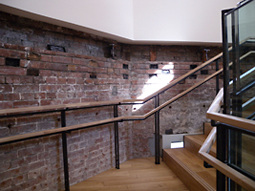 |
|
 |
| With the industrial feel of its original brickwork and steel structure highlighted in its interior design, Tokyo Station Gallery makes an exciting statement about architectural heritage and adaptive reuse. |
The route proceeds to the second floor through a sun-filled octagonal stairwell, where the white plasterboard walls of the reconstructed third floor give way to the original brick-and-steel framework of the second -- a permanent exhibit of the station's architectural history, complete with the charred remains of wooden blocks that burned when the building was firebombed. After you've admired the stained-glass window and art deco chandelier and have resisted the temptation to touch the handiwork of brickmasons who lived a century ago (it's not allowed), move on to artist Toshiyuki Shibakawa's humorous view of how this site and Japan might appear to a future excavation team some 2,000 years from now.
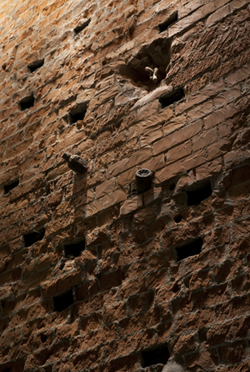 |
|
 |
In the museum's entrance hall and second-floor gallery, Toshiyuki Shibakawa hides mock-fossilized "artifacts" from the present day in the station's preserved walls.
Planet Wall (2000 Nengo ni Hakkutsu Sareta Gendai no Chiso: Tokyo Eki) (Planet Wall -- Archaeological Dig 2,000 Years from Now: Tokyo Station), 2012 © Toshiyuki Shibakawa; photograph by Mareo Suemasa |
|
Artist Sayaka Akiyama is shown on August 27 with her work-in-residence -- an embroidered representation, through time and space, of her travels from her neighborhood in Sagamiono (the map suspended below) to Tokyo Station and her strolls both within the station and from there to Nihonbashi and back again.
Aruku, Watashi no Seikatsukei (My Walking Model -- Tokyo Station July to September 2012) © Sayaka Akiyama; photograph by Hideto Nagatsuka |
Some people make scrapbooks of their travels, but artist Sayaka Akiyama tracks her memories literally -- with an embroidery needle, directly onto polyester maps of the places she has walked. The odd bits and scraps she acquires along the way -- the used train ticket, the commemorative sticker or strap, receipts, food wrappers, doodlings, buttons, strands of ribbon, and even, in the case of the piece she created for this exhibition, a lost cavity filling -- are stitched right in, telling a curious tale of the urban lives we lead.
Shown in the same gallery as Akiyama's painstakingly handcrafted maps is an equally inspired digital one by Michitaka Hirose, a University of Tokyo Graduate School professor and a specialist in virtual reality. His Sharelog 3D invites visitors to place their prepaid IC fare cards on a reader, which then projects your history of rides on Kanto-area rail and subway networks onto a sprawling satellite map of the region. Following, from a bird's perspective, the beams of light that represent your and others' day-to-day movements on this part of the planet is somehow oddly pleasing, and a great conversation starter with fellow gallery-goers.
 |
|
 |
| Sharelog 3D, 2012 © Michitaka Hirose, with art direction by Yasuhiro Suzuki and system development by Takuya Arakawa, Jun Imura, and Masamichi Ueda |
|
Ou Honsen, Hirosaki Eki (Hirosaki Station, Ou Main Line), December 27, 2008, from "Sequences of Light" © Daisaku Oozu
|
The last section of the exhibition features works in a more contemplative vein, as if to wind up the tour quietly before sending you on your way back into the fray. Daisaku Oozu's video panel and 14 photographs of misty scenes taken from train windows are a study of light, movement, mood, and ambience. Yukihiro Yamagami's exquisitely detailed graphite drawings of Tokyo Station (inside and out) and the Chuo Line platform are impressive enough on their own, but the artist goes one step further, superimposing real, time-elapsed film footage of the same scene over each of his canvases. As you watch, the graphite details slowly acquire soft pastel hues as traffic lights change, trains come and go, people move through, and the sky changes from dawn to dusk.
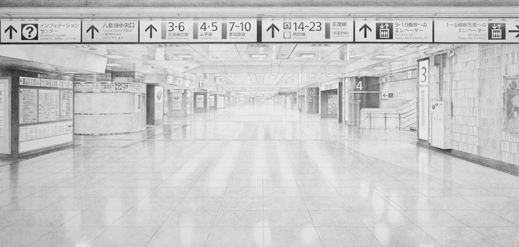 |
Though rendered in pencil, this view of the central concourse linking the Marunouchi and Yaesu sides of Tokyo Station by Yukihiro Yamagami shows near-photographic quality of detail, such as in the way light is reflected on the polished floor tiles.
little trip, 2012 © Yukihiro Yamagami
|
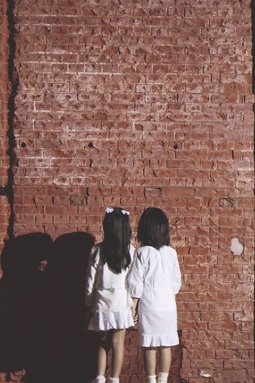 |
|
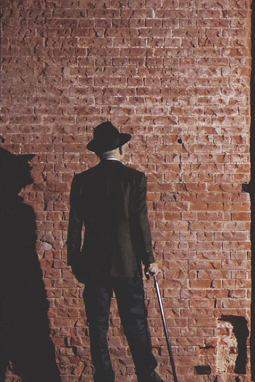 |
Gallery Junguring, 2012 © Masaaki Hiromura
Photographs are published by permission of Tokyo Station Gallery and East Japan Railway Company. Where no credit is indicated, photographs are by the author.
|
The final installation is by graphic designer Masaaki Hiromura, creator of the Tokyo Station Gallery logo. His slow-motion videos of young, teenage, and elderly models studying the gallery's brick wall are meant to be a statement about finding inspiration amid familiar surroundings by changing one's view -- or simply pausing to take a closer look. One can't help wonder if the models are stand-ins for Hiromura himself, who fashioned the gallery's symbolic 'T' after the mortar joints of its iconic bricks.
 |
 |
Susan Rogers Chikuba
Susan Rogers Chikuba, a Tokyo-based writer, editor and translator, has been following popular culture, architecture and design in Japan for 25 years. She covers the country's travel, real estate, hospitality and culinary scenes for domestic and international publications. |
|
 |
|